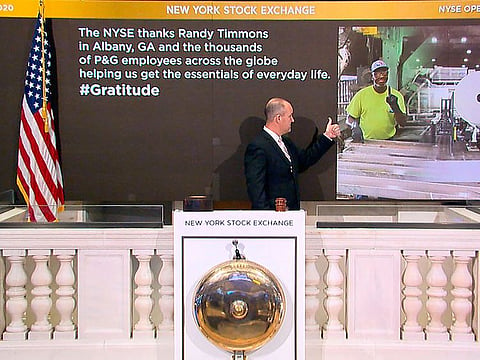Stimulus response: Investors shouldn’t buy all over the place
They ought to be far more selective in picking out likely winners this time

(Bloomberg): With the Federal Reserve’s “whatever it takes” measures succeeding in reducing the threat of financial market failures, investors are inclined to “follow the Fed” by purchasing riskier securities to take advantage of prices not seen for quite a while.
It’s an investment approach that has worked well in recent years in virtually all asset classes. Although it is likely to work again, it will be in far fewer market segments and subject to greater uncertainty and risks, especially in the lower parts of the capital structure of companies and the economy as a whole.
The strongest argument for an investment approach that focuses overwhelmingly on a single issue - how committed, in words and actions, is the Fed to financial market stability - is that this worked extremely well for many years. Again and again, the world’s most powerful central banks jumped to repress higher market volatility. Again and again, they succeeded.
And again and again, this contributed to continual across-the-board gains. With that, investors were conditioned to “buy the dip”, resulting in periods of exceptional gains, low volatility and unusual correlations in which the prices of both risk and risk-free assets rose together.
Responding to the coronavirus-induced sudden stop in the real economy, the Fed has verbally committed and physically displayed an “all-in” approach to ensure that markets function well. This has included:
Fed’s working overtime
Have no doubt, this is a remarkable policy engagement that in just two weeks expanded the Fed’s balance-sheet by an astounding $1.3 trillion. And it won’t end there. The Fed is said to be working on other facilities as it seeks to ensure that financial market dislocations do not spill over into an economy already experiencing a historic and alarming rise in joblessness.
With such Fed involvement, it should come as no surprise that a growing number of investors have followed it back into markets, or are tempted to do so. After all, what’s more assuring than buying when another buyer with unlimited purchasing power is behind you?
At first glance, this market opportunity seems even more compelling than what investors successfully bet on for years after the global financial crisis. But, I suspect, it is also a lot more selective one for at least two reasons.
But take a pause
First, the economic context is much different. Despite Fed liquidity injections and the $2 trillion fiscal package rushed through by the Trump administration and Congress, the US economy is already in a recession that will get worse in the weeks to come. Indeed, the risk of a depression is uncomfortably high.
Unfortunately, the result is certain to include more unemployment, more income losses for those with jobs, and record corporate credit downgrades and bankruptcies.
Second, some investors’ risk appetite has been sapped by the sudden and large losses they have incurred already and the more challenging need to manage liquidity carefully in light of falling income. As such, even if the willingness to buy the dip exists, it is no longer matched by the same ability that prevailed in the recent past.
Focus on max impact areas
Together, these two factors suggest that rather than following the previous playbook of expecting a deep and wide Fed trickle-down effect, investors should pursue a strategy that focuses overwhelmingly on the areas touched directly by Fed liquidity. They should be a lot more careful in assuming that the Fed’s success in calming liquidity risk will also expand to credit and equity risk beyond the main purview of its emergency facilities.
If I am correct in my analysis, this results in caution for those expecting the Fed to effectively bail out the weaker segments of the credit market, like high-yield bonds, and of equities, like emerging markets. Moreover, the risk of triple-B rated companies becoming speculative grade is high, and the Fed will be hesitant to increase its own credit exposure to them.
These so-called fallen angels have, and in some cases still are, taking on more debt at a time of declining actual and future earnings. That becomes a balance-sheet and income issue that the Fed can do little about.
Stick to the known
Thus, the only way investors would be protected in these circumstances would be through the government rather than the central bank. In other words, this is a bet on government bailouts on terms that are favorable to financial investors. It’s not a wager that I would be comfortable in making or advocating.
Rather than view the Fed’s unquestioned commitment as a signal to buy across the financial markets, investors should focus on specific senior sectors and high-quality securities. It is another reason to trade up in quality by sharply reducing credit and equity exposures to those companies at high risk of default or downgrade below investment grade.
Remember, in making the policy bet in this environment, it is particularly important for investors to distinguish between liquidity risk on the one hand and credit and equity risks on the other. And in following the Fed, investors need to keep in mind that the central bank is committed to ensuring smooth functioning for senior segments of the financial markets.
It does not seem willing, and may even not be able, to support income and balance-sheets for the more junior ones.
Sign up for the Daily Briefing
Get the latest news and updates straight to your inbox







